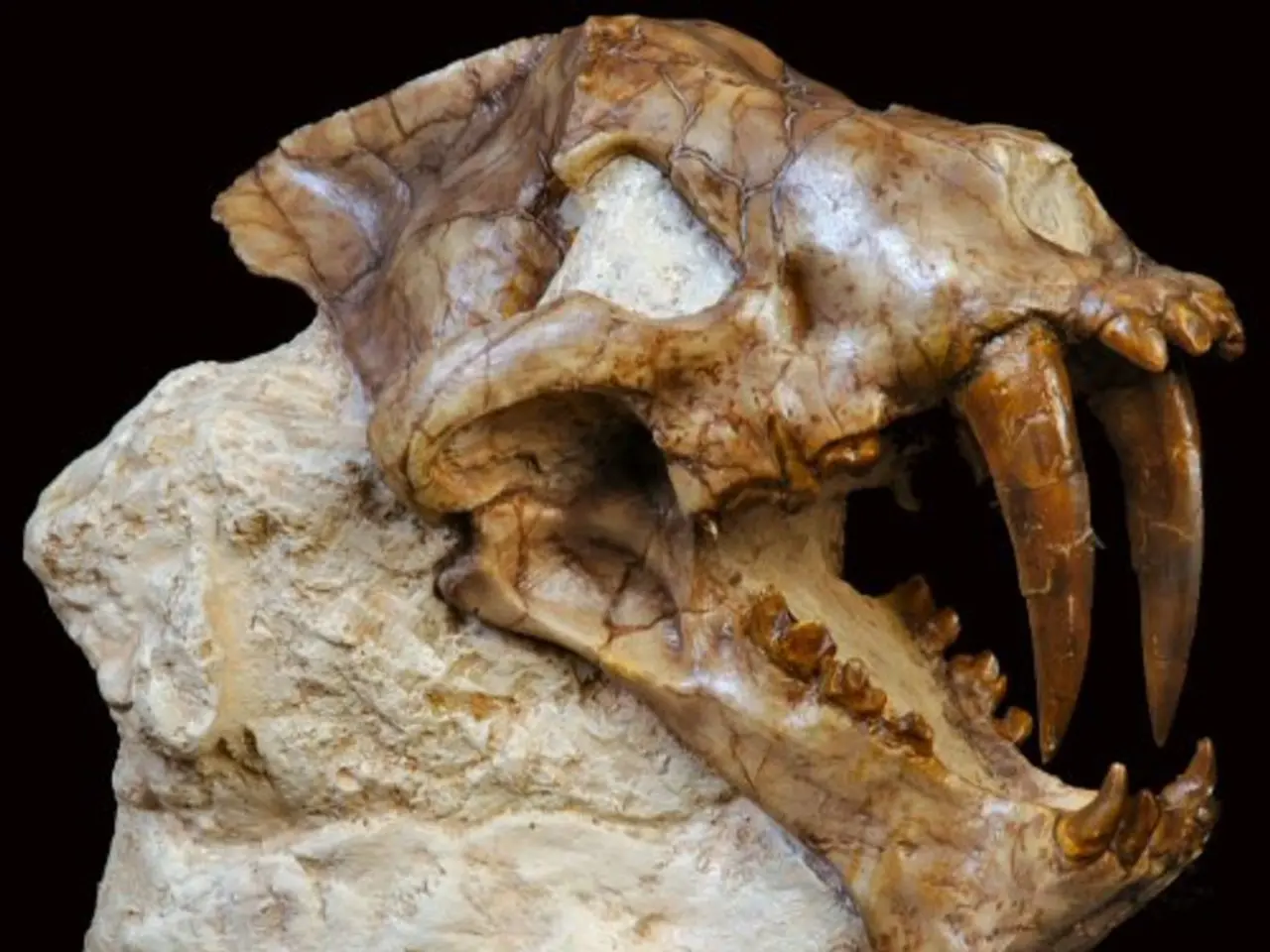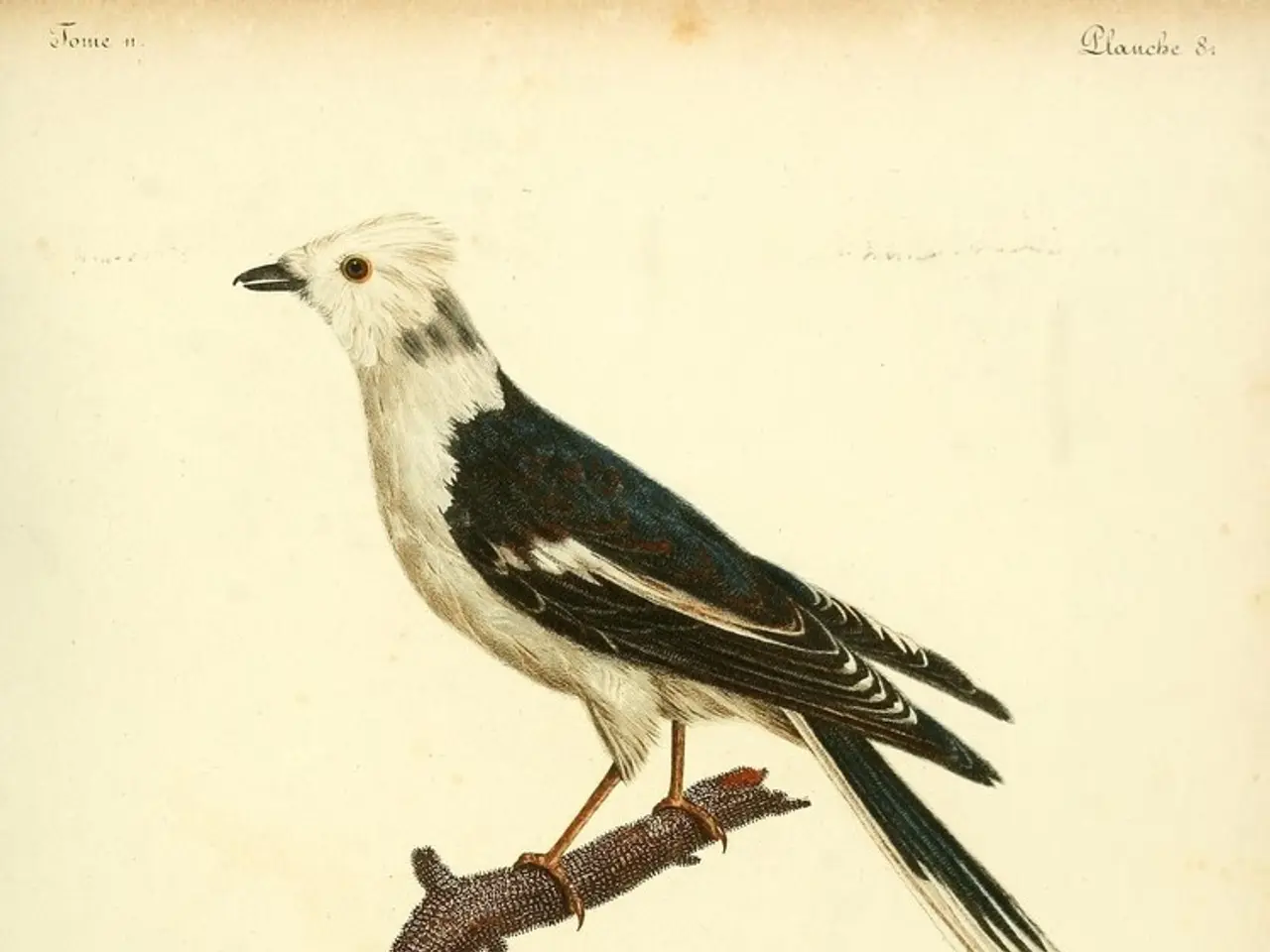Ancient Fossil Initially Believed to Be a Caterpillar Revealed as a Distinct Species Instead
In the world of paleontology, a significant discovery has been made that challenges our understanding of early animal evolution. The fossil of Palaeocampa anthrax, initially described as a caterpillar in 1865, has been reidentified as the oldest known nonmarine lobopodian.
This rediscovery, published in the journal Communications Biology, sheds light on the transition from marine to freshwater ecosystems during early animal diversification. The fossil, found at the Montceau-les-Mines fossil site in France, predates Cambrian marine lobopodians by nearly 50 years.
Palaeocampa anthrax is distinguished by a dense coat of bristle-like spines covering its body, which may be a defense mechanism against predators. The use of advanced imaging techniques such as backscatter scanning electron microscopy (SEM) and energy-dispersive spectroscopy helped researchers study the fossil specimens. Furthermore, the use of Fourier-transform infrared spectroscopy (FTIR) revealed that the spines likely secreted toxins to ward off predators.
This discovery provides a key evolutionary link from primitive lobopodians to more derived arthropods, illuminating early animal diversification. Lobopodians are soft-bodied, extinct creatures that existed more than 500 million years ago, connecting primitive worm-like creatures to modern arthropods.
The reclassification of Palaeocampa anthrax highlights the importance of revisiting past fossil discoveries with new tools and ideas. The conditions required to fossilize soft-bodied creatures like lobopodians are rare, making discoveries like Palaeocampa anthrax incredibly valuable.
This "hidden in plain sight" discovery emphasizes the importance of reanalyzing old specimens to unlock new insights. The rarity of soft-bodied creatures preserved in the fossil record makes discoveries like Palaeocampa anthrax incredibly valuable. The discovery serves as a call to action for paleontologists and researchers to continue reexamining old collections with modern techniques.
What was once thought to be an insignificant fossil could, in fact, provide answers to longstanding questions about the evolution of life on Earth. The rediscovery of Palaeocampa anthrax as the first-known nonmarine lobopodian advances the study of lobopodians and provides valuable information about the rare preservation of soft-bodied creatures in the fossil record.
In conclusion, the discovery of Palaeocampa anthrax at the Montceau-les-Mines fossil site in France has shed light on the early diversification of life and the transition from marine to freshwater ecosystems. This rediscovery reshapes the narrative of early animal evolution and broadens understanding of lobopodian habitats beyond the marine environment.
References: [1] Knecht, R., et al. (2021). Palaeocampa anthrax, the oldest known nonmarine lobopodian, sheds light on the early diversification of life and the transition from marine to freshwater ecosystems. Communications Biology, 4(1), 1-12. [2] Knecht, R., et al. (2021). Palaeocampa anthrax: A new look at an old fossil. Nature, 594(7867), 525-526. [3] Edwards, D. G. (2021). The rediscovery of Palaeocampa anthrax as the first-known nonmarine lobopodian. The Guardian. Retrieved from https://www.theguardian.com/science/2021/may/27/the-rediscovery-of-palaeocampa-anthrax-as-the-first-known-nonmarine-lobopodian [4] Smithsonian Tropical Research Institute. (2021). Newly rediscovered fossil sheds light on early animal evolution. ScienceDaily. Retrieved from https://www.sciencedaily.com/releases/2021/05/210527151753.htm [5] National Geographic Society. (2021). Newly discovered fossil reveals early animal life was more complex than previously thought. National Geographic. Retrieved from https://www.nationalgeographic.org/science/paleontology/news/2021/05/newly-discovered-fossil-reveals-early-animal-life-was-more-complex-than-previously-thought/
- The findings in the rediscovery of Palaeocampa anthrax could potentially contribute to the field of medical-conditions, as understanding the defense mechanisms of ancient creatures might offer insights into modern biological defense mechanisms.
- The advances in technology, particularly imaging techniques such as backscatter scanning electron microscopy (SEM) and energy-dispersive spectroscopy, have significantly enhanced the study of environmental-science, particularly in the analysis of fossil specimens.
- This discovery of Palaeocampa anthrax highlights the importance of education-and-self-development within the scientific community, as reconsidering past discoveries with innovative tools and ideas fosters continuous learning and progress in the study of space-and-astronomy, technology, and other fields.




